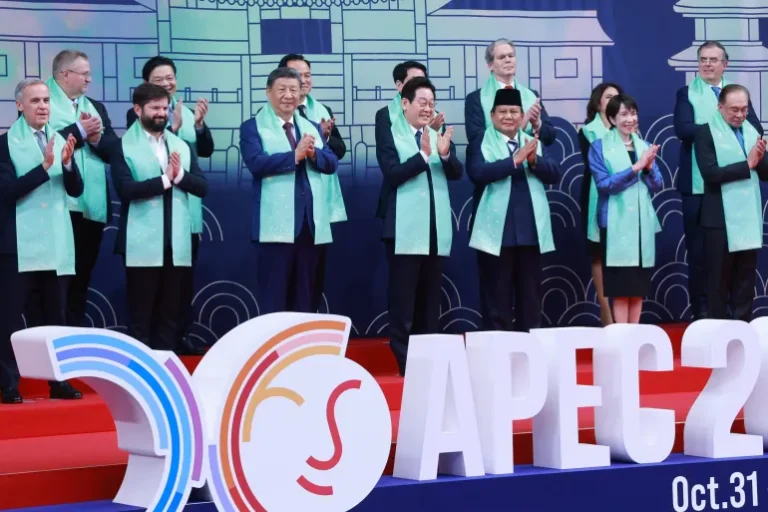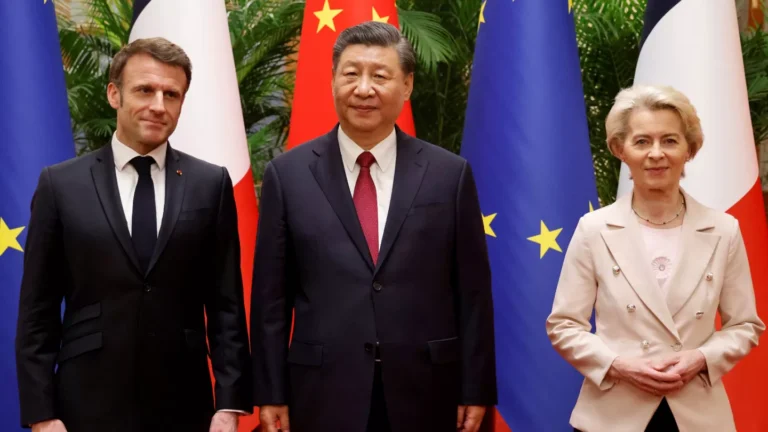
Europe’s relationship with China has undergone a major shift in rhetoric over the last few years. Specifically, the European Union (EU) has adopted the strategy of “de-risking.” This term focuses on mitigating risks and limiting strategic dependencies. It is distinct from the US policy of “decoupling,” which aims for a broader economic disengagement. However, a closer look at Europe’s trade figures and internal policies suggests a complex reality. The EU is struggling to translate its political strategy into economic fact. Consequently, the question remains whether Europe is truly forging an autonomous path or merely reacting to the protectionist and geopolitical pressures applied by the United States.
The Policy Divide: De-Risking vs. Decoupling Europe
The terminology used by Brussels is deliberate. European Commission President Ursula von der Leyen introduced the term “de-risking” to frame the bloc’s approach. This language signals that the EU acknowledges the geopolitical and economic risks posed by Beijing. It also shows that the EU is not interested in an all-out economic severance. This is because full decoupling would severely undermine Europe’s economic stability. Instead, de-risking focuses on protecting critical sectors, promoting European competitiveness, and partnering with allies to reduce key vulnerabilities.
- US Unilateralism: Conversely, the United States, particularly since President Donald Trump’s return to office, has pursued a more aggressive decoupling strategy. This policy has been implemented through tariffs, export controls on sensitive technology, and investment blockades. The goal is clear: contain China’s technological and economic rise. Therefore, the US approach is often criticized by Europe as unilateral. The US passage of the CHIPS and Science Act and new export controls stunned Europeans, as they felt the unilateral moves undermined transatlantic coordination.
- China’s View: It is important to note that Beijing sees little difference between the two terms. Chinese state media consistently argues that “de-risking” is merely a softer term for “decoupling.” This narrative suggests that the EU is simply following Washington’s lead in an effort to contain China. Therefore, Beijing attempts to exploit any political divisions among EU member states.
The Economic Reality: Deepening Dependency
Despite the political shift toward de-risking, trade data reveals a problematic deepening of economic ties with China. This reality contrasts sharply with the US, which has successfully reduced its import reliance on China.
- Trade Imbalance: The European Union is growing more dependent on China as a supplier of manufactured goods. For example, between $2019$ and $2024$, China’s trade surplus with the EU nearly doubled. It soared from €$164$ billion to over €$305$ billion. This enormous imbalance highlights the structural difficulties Europe faces.
- Strategic Imports: Crucially, the composition of EU imports from China has become significantly more “strategic.” The trade has shifted away from consumer goods like shoes and toys. It now includes critical inputs like electronics, specialized industrial machinery, chemicals, and components essential for the electric vehicle (EV) industry. This growing reliance in high-tech sectors creates deep vulnerability to future economic coercion.
- The EV Flashpoint: The electric vehicle sector is a case in point. Chinese EV brands have doubled their market share in the EU in the last year. This surge is driven by state-subsidized overcapacity in China. The European Commission’s response has been to impose provisional tariffs on Chinese EV makers. However, the cost factor often pushes European businesses and consumers toward cheaper Chinese alternatives, consequently undermining the de-risking goal.

Internal Friction: A Lack of Coordination Europe
The attempt to implement de-risking across the $27$-member bloc is hampered by fragmented and uncoordinated national efforts. The lack of internal unity remains a significant hurdle.
- Diverging Standards: European resilience-building remains disjointed. Member states still have different national definitions of critical infrastructure. They also maintain varying thresholds for foreign direct investment (FDI) screening mechanisms. For instance, only a few member states have institutionalized frameworks for research security. This fragmented approach leaves gaps that Beijing can easily exploit.
- The Balkan Arena: China’s growing influence in the Western Balkans poses a specific challenge. The EU’s enlargement framework has not kept pace with this new geopolitical reality. This is evident in cases like Montenegro, which faced financial collapse due to a massive Chinese highway loan. Although the EU intervened to prevent debt bondage, it still lacks a clear “China conditionality” for EU aspirant countries. Therefore, this ambiguity allows China’s influence to grow on the bloc’s periphery.
- The Economic Incentive: Furthermore, many individual EU governments continue to promote industrial cooperation with China. They open their doors to Chinese investments in green technologies. While this practice brings benefits to local industrial capacity, it also risks increasing dependency on Beijing. This internal tension frequently undermines the unified strategy of the European Commission.
The Autonomous Path: A Political Will Check Europe
The question remains whether Europe can truly achieve strategic autonomy or if it is simply following the dictates of the US security narrative. The EU shares many values with Washington. However, its economic interests diverge significantly.
The path to autonomy requires a major commitment of political will and capital. Europe must prioritize the “promote” element of its de-risking agenda. This means generating massive support schemes for clean-tech and semiconductor supply chains. This financial investment would reduce dependencies on both the US and China. Without sufficient funding for initiatives like the Critical Raw Materials Act, the strategy remains merely rhetorical. Consequently, Europe risks becoming a battleground where trade is diverted from the US market. It could suffer from price dumping on its own. The EU must urgently find the convergence between its security concerns and its industrial policies. It must act decisively to prevent external powers from exploiting internal competition among member states. Ultimately, the success of “de-risking” hinges on Europe’s political commitment to invest in its own technological and economic sovereignty. Europe
Read More Articles Click Here. Read Previous Article Click Here.





